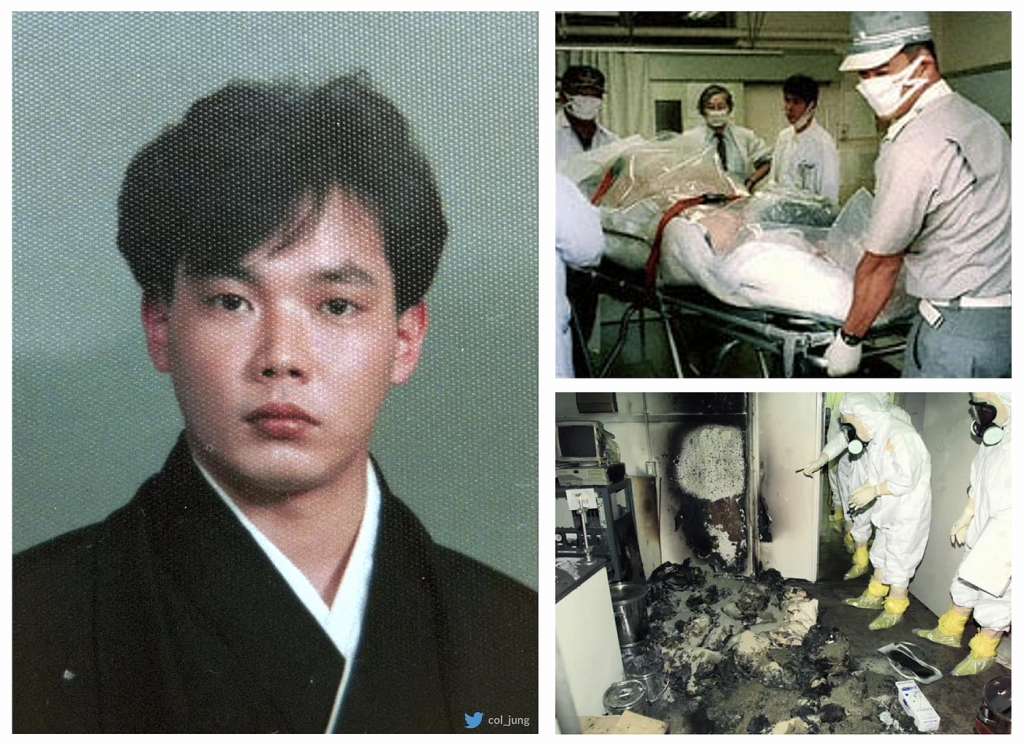Unveiling The Life Through Hisashi Ouchi Photos
Hisashi Ouchi is a name that resonates deeply in the realm of nuclear science and tragedy. His story, marked by an unfortunate accident, has been documented and discussed widely, capturing the attention of both the public and the scientific community. Through various media, including powerful photographs, the narrative surrounding Hisashi Ouchi serves as a poignant reminder of the risks associated with nuclear energy and the human toll of industrial accidents.
Hisashi Ouchi's journey is not just a tale of a life lost but also a cautionary story that highlights the importance of safety protocols in hazardous environments. The images related to his life and the tragic events that unfolded after the critical accident tell a compelling story that goes beyond mere documentation. They invoke emotions, sparking conversations about safety, ethics, and humanity's responsibility towards its workers in dangerous fields.
In this article, we will explore the life of Hisashi Ouchi through various lenses, focusing on his biography, the infamous accident, and the implications of his story as reflected in the photographs taken during and after the event. We will also delve into the broader context of nuclear energy safety and the lessons learned from this tragedy.
- Unraveling The Mystery Who Was Charlize Theron Married To
- Exploring Neve Campbells Journey In Love And Life
Who was Hisashi Ouchi?
Hisashi Ouchi was a Japanese nuclear technician who became notoriously known for being one of the victims of the Tokaimura nuclear accident in 1999. At the time, he was working at a uranium processing facility when a criticality accident occurred, resulting in severe radiation exposure. The incident led to a prolonged hospital stay and ultimately, his tragic death due to radiation sickness.
What do Hisashi Ouchi's photos reveal about his life?
The photographs of Hisashi Ouchi provide a glimpse into his life before and after the accident. They capture moments that reflect his aspirations, dreams, and the human side of a man who was caught in an unimaginable situation. These images, while sometimes hard to look at, serve as a reminder of the fragility of life and the consequences of industrial negligence.
What were the significant events leading up to the accident?
To understand the gravity of the incident, it is crucial to look at the events that preceded the accident. Here are some key points:
- Jude Bellingham A Closer Look At His Mixed Race Heritage
- Unraveling The Mystery Is Bob Morley Married
- Hisashi Ouchi was working at the JCO uranium processing plant in Tokaimura.
- On September 30, 1999, criticality occurred when workers improperly mixed uranium fuel.
- Ouchi and two colleagues were exposed to high doses of radiation.
- The incident was later classified as one of Japan's worst nuclear accidents.
What can we learn from the Hisashi Ouchi photos?
The photographs taken during the aftermath of the Tokaimura accident serve as poignant reminders of the risks involved in nuclear energy production. They raise critical questions about safety and regulations in the industry. By examining these images, we can glean insights into the human cost of technological advancement and the necessary precautions that must be in place to prevent similar tragedies.
How do Hisashi Ouchi's photos influence public perception of nuclear energy?
Images of Ouchi, particularly those that showcase the severity of his condition during his hospital stay, have a profound impact on public perception of nuclear energy. They evoke emotional responses that often lead to skepticism and fear surrounding nuclear technology. Here’s how these photos shape public opinion:
- They highlight the potential dangers associated with nuclear energy.
- They serve as a visual reminder of the human cost involved in safety lapses.
- They foster discussions on regulatory measures and industry accountability.
What is the legacy of Hisashi Ouchi's story?
The legacy of Hisashi Ouchi extends beyond the tragic events of 1999. His story has influenced nuclear policy and safety regulations in Japan and around the world. It has prompted discussions on the ethical implications of nuclear energy, highlighting the need for stringent safety protocols and a reevaluation of risk management strategies. The following points summarize his legacy:
- Increased awareness of nuclear safety and regulatory practices.
- Greater advocacy for worker safety in hazardous environments.
- A call for transparency and accountability in the nuclear industry.
What personal details and biodata are known about Hisashi Ouchi?
| Detail | Information |
|---|---|
| Name | Hisashi Ouchi |
| Date of Birth | Unknown |
| Occupation | Nuclear Technician |
| Place of Birth | Japan |
| Date of Accident | September 30, 1999 |
| Date of Death | December 21, 1999 |
How did Hisashi Ouchi's accident change nuclear safety regulations?
The Tokaimura accident led to significant changes in nuclear safety regulations in Japan and globally. In the wake of the incident, stricter safety protocols were implemented to prevent similar occurrences. Here are some of the changes that took place:
- Enhanced training programs for nuclear facility workers.
- Stricter oversight of nuclear facilities by regulatory bodies.
- Increased emphasis on emergency preparedness and response plans.
What is the significance of Hisashi Ouchi's photos in memorializing his story?
Hisashi Ouchi's photos play a crucial role in memorializing his story. They serve not only as a record of the tragic events surrounding the Tokaimura accident but also as a reminder of the human element in industrial safety. Through these images, we honor his memory and the lessons learned from his experience. The significance of these photographs lies in their ability to:
- Preserve the memory of Ouchi as a person, not just a statistic.
- Encourage ongoing discussions about safety in nuclear energy.
- Inspire future generations to advocate for safer working conditions.
In conclusion, Hisashi Ouchi's story is a powerful narrative of human resilience, tragedy, and the critical importance of safety in industries dealing with hazardous materials. The photos associated with his life and accident continue to evoke strong emotions and serve as a reminder of the need for vigilance in ensuring worker safety. As we reflect on his life through these images, we are compelled to honor his memory by advocating for a safer future in the nuclear energy sector.
- Unveiling The Love Life Of Marlo Thomas Who Is Marlo Thomas Married To
- Barron Trump A Glimpse Into His Unique World And Autistic Traits

Hisashi Ouchi Single Album by Acacia Komodo Apple Music

Hisashi Ouchi, The Radioactive Man Kept Alive For 83 Days. (1999) r

Hisashi Ouchi A Symbol of Tokaimura's Nuclear Tragedy Historyen